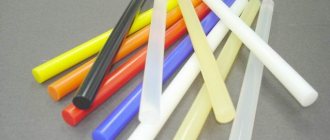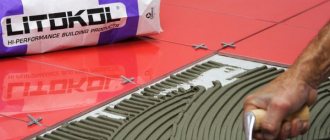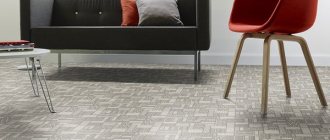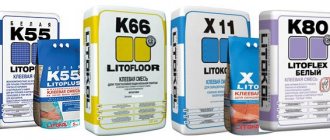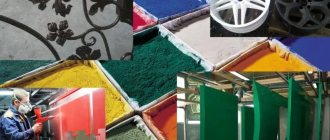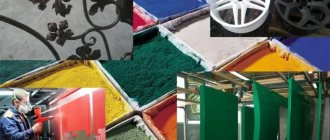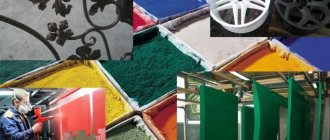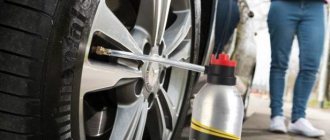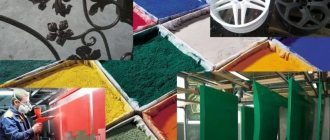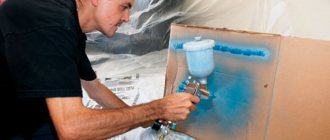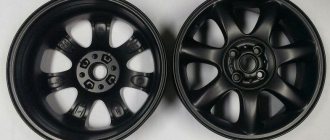Cars admin26.02.2020
Thermoplastic adhesive
(hot-melt adhesive, hot-melt adhesive) is an adhesive substance that can repeatedly transform into a liquid form (melt) when heated and harden when cooled. As a rule, these are a variety of thermoplastic polymer materials, most often based on ethylene vinyl acetate or polyamide. The ability to fill voids, low shrinkage, and high mechanical strength make hot-melt adhesives convenient for gluing very uneven surfaces.
It should not be confused with thermosetting adhesives, in which, when heated, a chemical reaction occurs to harden the composition. A specific category of thermosetting adhesive compositions are plastisols.
Thermoplastic adhesives should not be confused with thermally conductive adhesives. To use Thermoplastic glue, use a hot glue gun.
Melting temperature
The composition of glue sticks can vary significantly, which affects their melting point.
Products created on the basis of EVA melt already at +80°C, and the operating temperature is considered to be within the range of +120... 150°C. It is recommended to use such rods for the household type of glue gun. Rods consisting of polyamides and polyolefins begin to soften at +155°C, and the operating temperature for this type is +180... 200°C. Such rods are already used in professional equipment that can withstand heating up to +500°C. To glue surfaces that can withstand heating to high temperatures, high-temperature compounds are used.
The choice of rods must be made based on the type of surfaces with which the work will be done and the equipment that is planned to be used in the process.
Hot glue crafts
What can be made from hot glue? There are many ideas for crafts for beginners on the Internet (for example, on the YouTube channel Trum-Trum-Select), life hacks and interesting interior items are described. To work you will need:
- glue gun;
- foil;
- translucent paper;
- pencil;
- wax crayons;
- cardboard;
- acrylic paints;
- sparkles, etc.
You can use hot glue to decorate your phone case. The product is squeezed onto the product in the form of any pattern you like, allowed to dry, and then carefully painted with acrylic paint. You can also pour glue into a silicone mold and insert a metal ring on top. After hardening, you need to remove the mold - you will get an original keychain.
It's easy to fill your fangs with a gun for Halloween. To do this, you need to lubricate the foil with regular hand cream, then squeeze the teeth blanks directly onto the cream. After hardening, they can be removed, painted and glued to a cardboard mask. Using hot glue, you can draw on fabric, wool, paper and wallpaper, fulfilling all the most original ideas.
Peculiarities
Despite the fact that the pistol has a single purpose, it has 2 varieties. The device can be domestic or professional. The second products are automatic. They are used mainly on conveyors. Essentially, these are low-power and high-power electrical appliances. Household devices differ in the mechanical supply of glue and can be different depending on the criteria applied to them.
For example, they differ in the diameter of the cartridge. In stores you can purchase devices designed for 7 and 11 mm rods. Less common on the shelves are options for hot-melt guns for glue sticks with a diameter of 8 and 12 mm. Usually for household use they try to choose a product with a cartridge diameter of 7 mm.
However, for needlework, the size of the nozzle is of great importance. The smaller the outlet diameter, the more accurately the molten adhesive mass is supplied. For needlewomen, this factor is one of the most important when purchasing.
Features and properties of polymer rods
As a rule, in the absence of any special requirements for the work being performed, the work surfaces are fixed using a glue gun of standard dimensions. Based on this, the most popular rods are 7-11 mm products, the cost of which on the market is relatively low. The consumable material itself is characterized by the following points:
- The rods are characterized by increased strength and fracture resistance;
- Visually, the workpieces are almost completely transparent;
- The material should be stored at room temperature ;
- In addition to width, polymer products can also vary in length, where the maximum parameter can reach 30 centimeters;
- If the rules of operation and storage are properly observed, the rods can have an unlimited lifespan!
The polymer itself is considered a universal material, which today is successfully used in various fields of activity. In most cases, 7 and 11 mm glue gun refills allow you to glue almost any object and material.
In stores there are blanks made of black polymer, which allows craftsmen to glue surfaces of the corresponding color without the appearance of the adhesive composition.
The only exception to the rule is surfaces with high adhesion. Such items should not be fixed with adhesive. In addition, there are polymer products that are also not recommended to be fastened with a glue gun!
Classification of glue sticks
In order to simplify the handling of hot-melt adhesive materials, a color classification of consumables has been adopted. That is, you can choose the appropriate version of the hot-melt base based on the manufacturer’s markings and the color of the rod. Often consumables are sold individually and without packaging, so the main reference point remains the color of the polymer.
White and yellow glue sticks
Milky white and opaque yellow hot-melt adhesive materials are produced on the basis of polyethylene and EVA, the main purpose is gluing paper, ceramics, wood, you can even glue ceiling tiles. Melt adhesion is lower than standard, but it is quite sufficient for fixing lightly loaded parts. The main advantages of the material are its low price and low melting point, so when working with a gluing machine, the risk of burning through the surface being glued is minimal.
Transparent white thermal rods are produced on the basis of ethylene vinyl acetate, which is considered a universal adhesive material that can be used to glue everything. Unlike previous rods, the transparent white seam turns out to be a little softer, with high adhesion, it can even stick to the skin of the hands and clothing, if the melt misses the target, after hardening it can be easily removed from the surface with a blade.
Crystal-transparent rods are usually produced on the basis of modified silicone. It can be used to glue wood, but is most often used to join fabrics, since at a low melting point the melt penetrates well into the surface and is practically invisible after hardening.
Transparent yellow adhesive thermal sticks are made from polyamide, which is very rigid, has low adhesion and can absorb moisture. Used as a universal hot melt adhesive for wood, plastic and metal.
Colored glue sticks
In addition to universal hot melt adhesives, specialized brands are available, for example, a black glue gun stick. Two types of hot-melt adhesive are produced under this color marking. The first is used exclusively as a high-strength and resistant waterproofing, for example, to seal seams at the joints of flanges and pipe fittings. The material is quite elastic, so loads do not lead to destruction of the cushioning layer.
The second option is glue sticks to enhance the insulation of contacts in electrical wiring systems. During the cooling process, hot melt adhesive provides very good adhesion to copper, brass or aluminum surfaces and at the same time slight shrinkage. The result is a virtually non-porous and durable coating.
Both versions of the black hot melt adhesive stick are made from EVA, so the hot melt adhesive is highly versatile and can be used for other purposes if necessary. Some Chinese manufacturers manage to produce black adhesive thermal rods, which, according to the labeling, are suitable for absolutely all materials, from metal to glass.
In addition, sets of 12 or 24 colors are made on the basis of EVA. In terms of their characteristics, colored rods are practically no different from universal ones, but they have one very valuable advantage. When gluing a colored surface, you can select a rod that matches the color and make the seam almost invisible.
The main advantages of glue
In addition to the already mentioned qualities of obtaining a super-strong connection and versatility in terms of use, hot-melt adhesive has other useful properties:
- the polymerization process of the material occurs incredibly quickly, but the drying time depends on the thickness of the applied layer, the condition of the bonded surfaces and the ambient temperature;
- the ability to create a rigid connection; only those materials and products that should not be subject to thermal expansion during operation can be glued with hot-melt adhesive;
- products connected with hot-melt adhesive have a long service life; they are not afraid of moisture, frost, or ultraviolet rays.
The advantages of the material also include its quite reasonable price; a kilogram of hot-melt adhesive costs around 300-350 rubles.
Application area
To solve certain problems, rods are produced in both a wide range of shades and transparent ones. This is very convenient for those who love handicrafts. Having selected the desired color, the product will look solid, no traces of glue will be visible. Models of filled rods have appeared.
For example, glitter and mother-of-pearl are added to the mass. The glue itself becomes a decorative element of the product, part of the composition. Thermal gun can be used in construction and repair. However, it is worth remembering that setting time is limited. After application, it is advisable to fix the part in place in the first few seconds.
There are also some restrictions. For example, where heavy loads are expected, it is not recommended to use a hot-melt adhesive connection; it is not designed for this.
You can glue decorative elements to shoes, but the soles will not last long. Do not use a gun to secure power structures during construction and repairs. It is not recommended to apply glue to plasters and putties without first treating them with primers and paints.
Sealing and insulation of seams
During operation, cracks and gaps appear in various structures. They appear in window and door systems, openings, and shafts. Often such a defect occurs in finishing materials. In addition to the untidy appearance, there are also undesirable consequences in the form of drafts and further destruction of the structure.
If there are no building mixtures or sealants at home, but you have a glue gun, then you can quickly solve this problem. With its help, you can easily make the desired connection and seal the seams. It is recommended to purchase special black or gray rods for this work. But first you need to clarify whether the gun is capable of maintaining the required temperature.
Video: Glue gun - why and how
The edges of the crack are cleaned of debris, foreign substances, and degreased. Then, after heating the gun for the required time according to the instructions, fill the seam. The result is reliable, durable insulation.
After cooling, you can cut off excess glue with a knife. The connection is not afraid of moisture, is not subject to corrosion, and will not emit substances harmful to health, so it can be used both in utility rooms, and in kitchens and children's rooms.
Tile
What to do when a tile falls off at home? You can get to the nearest hardware store and buy the required mixture. But it is usually sold in large packages and most of it will probably simply disappear. Repairs can be made with a glue gun.
Before starting work, you need to remove all remaining mixture from the tiles and the seat. It is advisable to do this even with a small margin, so that the tiles fall through with a small gap, no more than 1 mm.
Before applying the glue, it is recommended to warm the part with a hairdryer, and after installing it in place, hold it in the desired position for 2-5 minutes until it cools completely.
Furniture
The interior will lose greatly if any element is broken or missing altogether. Front parts of furniture often fail during use. Decorative decorations and overlays can be restored with hot glue. There is no need to fix the glass with a gun.
The operating temperature of the glue is from 105 °C to 200 °C. These are critical values for glass; it may crack or break. A wooden surface easily tolerates this temperature.
Excess glue can be easily removed from it later. It is not recommended to glue load-bearing structures and functional mechanisms of furniture. The loads are too great and the glue cannot withstand them.
Characteristics of hot-melt adhesive rods
As already mentioned, the release form in the form of hot-melt adhesive rods is the most common due, first of all, to ease of use in conjunction with hot-melt guns of both professional and household class.
There are rods on the market with various properties and characteristics, which are usually indicated on the packaging.
Purpose
Hot-melt adhesive in rods differs primarily in color, which usually indicates its purpose.
However, it should be noted in advance that although there is a clear unification here, not every manufacturer adheres to it, which should be kept in mind when choosing these consumables.
Usually available to the buyer:
- White translucent rods are universal, used both in industry and for domestic needs.
- Opaque colored rods are similar to the previous option, but the only difference is that their color performs a camouflage or decorative function. They are mainly used for gluing colored objects.
- Opaque white rods - have different purposes, depending on the manufacturer and composition. Some can only glue glass, while others are a universal option for connecting white objects (similar to the previous point).
- Transparent yellow rods - have a universal composition, which is mainly intended for gluing wooden, cardboard and paper products. There are opaque yellow sticks, with which they should not be confused, again, by analogy with the second point.
- Gray or black rods are elastic sealants designed to insulate electrical conductors and seal seams, therefore they are not directly related to hot-melt adhesives as such.
Material
Hot-melt adhesive rods are most often produced on the basis of ethylene vinyl acetate, due to which they have a low melting point, which was already noted earlier, and therefore it is possible to use them in conjunction with low-power glue guns.
There is also a relatively low cost.
The base can also be polyamide or modified silicone.
The latter is well suited for working with fabrics.
Dimensions and weight of hot melt glue sticks
The diameter of the produced glue sticks can be 7 – 12 mm.
The most popular sticks are 7 and 11 mm. The length of such glue sticks reaches 100 – 300 mm.
A package of 6 – 10 rods weighs about 50 – 150 g.
This is interesting: Design of volute centrifugal radial fans: we tell you in detail
Types of glue
Depending on the characteristics (composition, color, size and other features), there are different types of hot-melt adhesive.
By composition
All adhesives have a similar composition. The basis (up to 50% of the mass) are thermoplastic polymers, the rest is distributed between resins and plasticizers. This type of glue does not contain organic solvents that are harmful to health. Most often on sale you can find products based on ethylene vinyl acetate and polyamide, although there are other types of materials.
Ethylene vinyl acetate (EVA) adhesives
Hot melt adhesives made from EVA have the best price-quality ratio, which is why they are the most popular. They are produced in the form of gun rods; the products can be used to glue any household products and be used in repairs and construction. For industry, hot melt adhesives based on ethylene vinyl acetate are most often supplied in granules for automatic use. In furniture production, such funds are used for gluing edges, profiles, and veneers. With their help, spring blocks for mattresses and car filters are produced.
Polyamide (PA) adhesives
Such products are usually used for gluing materials that have special requirements. This is due to the resistance of polyamide compounds to high temperatures and temperature changes (-35...+135 degrees). Polyamide adhesives do not deteriorate from the action of water, mineral and vegetable oils, and lubricants. Does this hot melt adhesive conduct current? Due to its low electrical conductivity, the material is widely used for repairing electrical equipment and LEDs, and producing insulation for electrical wires.
Polyolefin adhesives
Such products have even higher adhesion rates. Such adhesives are economical in consumption and have the highest flexibility among all types of hot-melt adhesives. Thanks to excellent adhesion, the products can be applied using a linear dot method or by spraying. Such adhesives are used in the manufacture of polyethylene packaging because they provide the highest performance.
Polyester adhesives
If the hot melt adhesive contains polyester resins, this product can be used to reliably glue fiberglass products, attach metal to glass, foil to cork, and even asbestos to copper, other metals, and alloys. Powerful adhesion comes from the presence of hydroxyl and carboxyl groups in the polyester molecule. Most often, polyesters of maleic acid, polyethylene glycols, and various comonomers (vinyl acetate, styrene) are used to create adhesives. Adhesives can withstand up to 40 freezing cycles and exposure to atmospheric factors for 5 years.
Synthetic rubber for adhesives
Adhesives with residual tack contain artificial rubber. After drying, they retain some stickiness, but the heat resistance of the products is very high, as well as elasticity and moisture resistance. Typically, rubber adhesives are used to fasten the spines of books and magazines, they are also used to glue probes together and attach plastic cards. This type of material is suitable for impregnation of nonwoven materials and wire insulation.
Amorphous polyalphaolefin (APAO) in the manufacture of adhesives
Such a composition includes a solid thermoplastic polyolefin, at least one polyester (usually based on urethane, polycaprolactone), and one amide. This type of adhesive has good adhesion to any surface except Teflon - this material cannot be retained with an adhesive composition. The product is used in the automotive industry (for example, for headlights, filters), the furniture industry and in the creation of interior decoration.
Reactive polyurethane (PUR) as adhesive base
After polymerization, hot melt adhesives based on polyurethane form a high-strength, elastic film that does not deteriorate at high and low temperatures. The difference from other types of hot-melt adhesives is the long curing time - it lasts 1-2 days and depends on humidity and the thickness of the adhesive layer. The unique ability of reactive polyurethane is the possibility of further processing of the seam after drying. The strongest in the line of such adhesives are considered to be POR adhesives, which are excellent for polypropylene, polyethylene, and rubber vulcanization.
By color
Depending on the color, adhesive compositions may also vary. Each of them has its own purpose:
- translucent white glues are universal tools that allow you to both glue any objects and make crafts with your own hands (for example, snowflakes);
- opaque white adhesives - used for fastening white parts, well suited for glass;
- transparent yellow adhesives - usually used for paper, cardboard, have universal properties;
- colored opaque adhesives - used for gluing colored products to create an invisible seam;
- black, gray glues are sealants, due to the safety of the composition they can be used in an aquarium, they are also suitable for insulating wires.
By diameter and length of glue rods
The diameter of the glue rod is most often 7 or 11 mm. There are also non-standard solutions - a little larger or smaller than the specified size, but when purchasing, you must take into account the diameter of the existing glue gun. The length of glue rods is usually 4-20 cm; they should be selected depending on the need and the size of the surfaces to be glued.
By power and warm-up time
The more powerful the heat gun, the less time it needs to warm up the nozzle and start working. Professional devices are usually more powerful than household ones. Pistols with 11mm rods are also more powerful than pistols with 7mm components. The power of the tool ranges from 10 to 100 W and higher for some professional glue guns.
The average heating time for the metal nose of the gun takes 5 minutes. There are models that heat up faster, in a maximum of 1 minute. Low-power household budget machines can start dispensing glue no earlier than 8-10 minutes. If speed is important, then such a tool will not work. For example, in needlework, floristry or working with polyurethane foam ceiling decor.
Why do you need to divide hot melt adhesive by diameter?
This also determines the choice of the diameter of the glue gun rods by the developers. The smaller the diameter, the less effort is required to squeeze the melt out of the melting chamber. To work with the refills for a 7 mm glue gun, very little effort is required, which means that the gun can be used by almost any adult or even a child.
Seven-millimeter rods are used in low-power and non-hot hot glue guns with small dimensions and weight. The melting point of such material rarely exceeds 160°C, so the gluing device is very light and economical. They are convenient for gluing paper, film, packaging goods, and temporarily fixing parts on the desktop. If you need to glue tiles on the ceiling, it is much more convenient to do this with a glue gun with a seven-millimeter “cartridge”.
It seems convenient, but the productivity is only 10-15 g/min, which is enough for spot gluing, but not enough for full gluing. Therefore, for gluing metal, glass, wood, and plastic, 11 mm glue gun rods are used. In addition to the increased productivity to 25-30g/min, the board temperature increases from 160°C to 195°C. The glue gun turns out to be twice as large and heavier, but it can glue almost anything that can withstand high temperatures.
Note! Glue sticks of 7 and 8 mm, as well as 11 mm and 12 mm are available for sale, which creates some confusion when purchasing consumables. Some glue gun manufacturers deliberately produce very inexpensive models with reduced tube diameters, for example, 7 mm and 11 mm, encouraging buyers to purchase only branded sticks
Therefore, before making a purchase, you should clarify three parameters:
Some glue gun manufacturers deliberately produce very inexpensive models with reduced tube diameters, for example, 7 mm and 11 mm, encouraging buyers to purchase only branded sticks. Therefore, before making a purchase, you should clarify three parameters:
- Melting temperature of the glue stick and compare it according to the passport with the characteristics of the gun;
- For what materials is the selected brand of hot-melt adhesive rod intended?
- The exact diameter of the rod, otherwise it may happen that your glue gun has a 7 mm clip, they offer to buy 11 mm.
You can even take with you an old package of thermal rods or look at the passport for the gun, which should contain all the necessary data on consumables. Otherwise, you will not be able to exchange or repair a burnt hot-melt glue gun under warranty.
Types of glue guns and their prices
Thermal guns are divided into types, depending on their design, functions and other indicators.
So, according to the method of heating the glue, the tool can be divided into:
Gas
Used primarily in field conditions due to its mobility.
The source of energy for heating here is butane gas, one charge of which is enough for an hour to an hour and a half of work.
The gas heater is started by pressing a key (button, lever), which is simultaneously responsible for the piezoelectric ignition and the gas valve.
This tool is refilled from lighter cans.
The cost of gas glue guns is 3 – 4 thousand rubles.
Electric
The design contains a heating element powered by electric current.
The source of the latter can be a household network or a battery.
Network heat gun
The tool is “tied” by a wire to an outlet, and therefore working away from electricity is out of the question.
On the other hand, it does not require recharging and can be used without prior preparation, you just need to wait until it heats up to a certain temperature.
Its cost starts at 250 rubles. and on average is about 1000 - 1500 rubles.
Rechargeable
Cordless glue guns are more portable, however, they require a fully charged battery.
The operating time without recharging of battery models is about 40 – 60 minutes.
However, the autonomy of such a pistol is only temporary, since the battery must be periodically charged, which again requires an electrical outlet.
The price is approximately 3 - 4 thousand rubles.
According to the method of applying glue, the tool can be divided into:
- Automatic - option with connection to a pneumatic line or electromagnetic system. In both cases, the glue is supplied to the heating element by pressing the start button.
- Semi-automatic - like the next method, provides mechanical feed. Here the rod is pushed towards the heater by a trigger, which can be rotary or fixed. The trigger is connected to a slider that moves along the barrel of the gun, pushing the glue.
- Manual - no trigger at all. Feeding is carried out by pressing the hand on the end of the glue stick.
Pneumatic
A hot glue gun with pneumatic feeding of glue cartridges is a professional tool, when working with which you can fully concentrate on the operation, since there is no need to load your hand to feed the glue stick.
Such models are designed to perform large volumes of work; they often have a power of over 300 W and are connected to a compressor capable of delivering a working pressure of 3–7 bar.
This pneumatic heat gun weighs more than 1 kg and requires simultaneous connection to the electrical network and a pneumatic line.
These are industrial models that are used for finishing and construction work.
High-power 600 W options are used in various furniture factories and factories for the production of windows and doors.
Professional
The more powerful tool is distinguished by the fact that it is capable of heating adhesive stickers within a few seconds, and is equipped with various auxiliary functionality that allows not only to increase labor efficiency, but also to maintain full control over the heating temperature.
Professional heat guns can be loaded with glue sticks, granules, pads and cylinders.
Household glue gun
It has a power that does not exceed 60 W.
To melt a drop of glue, such a tool can take up to 4 minutes of time; this primarily includes mini models with 20 - 25 W ratings.
According to heating temperature, the tool is divided into:
- Low temperature - most often the operating temperature is 110 degrees, sometimes a little higher. Used primarily for working with heat-sensitive materials.
- High temperature – the heating temperature is usually at least 195 degrees.
Glue pen
A separate type of glue gun that should also be mentioned is a glue pen.
This option is great for delicate work, in particular for needlework, their price is approximately 1,200 rubles per piece.
This is a cordless, battery- or AA-powered tool that can use up to 60 glue sticks on a single charge.
Actually, the name itself speaks about the shape of this device, the dimensions of which are comparable to a marker.
Proven tips for working with a glue gun: what to consider
To create high-quality gluing, it is necessary to place a glue stick of the required diameter inside the gun. In this case, a situation may arise when it is necessary to replace an already installed glue stick.
In this case, you must first empty the melting chamber by pressing the trigger, and then insert a new glue stick. If there is still a lot of glue, I heat the chamber and pull out the rod.
The areas to be glued must always be clean, dry and free of grease. They must be prepared in advance. The glue stick is selected in accordance with the materials of the objects being glued.
In certain cases, it is advisable to roughen smooth surfaces with sandpaper, a file, or a knife before gluing. It will provide better adhesion strength to the seam being created.
The ambient temperature and the temperature of the objects being glued must be no lower than +5°C and no higher than +50°C. It is better to preheat metals to improve adhesion.
Allow the appliance to cool completely before storing it. Moreover, it is advisable to leave it to cool on a special stand, and not just on the table.
The fact is that not all models are equipped with protection against glue leakage and there is a possibility that before the next use you will have to disassemble the device for cleaning.
Methods of applying glue
The easiest and most cost-effective ways to work with glue are to apply it manually, spreading the mass with a small roller with preheating. Still, it is much more convenient to use a glue gun, especially if you need to attach not too small parts. The glue stick in the gun will warm up, after which the composition will be ready for use.
Gluing is carried out in this way:
- clean the parts from dirt, dust, completely degrease the working surface (fats can be dissolved with acetone, alcohol);
- dry its base, otherwise the degree of glue adhesion will greatly decrease;
- smooth parts should be treated with sandpaper to improve adhesion to glue;
- heat elements that are too cold or bring them into the room so that there is no sudden temperature change and the glue lays evenly;
- insert the glue stick into the cartridge, turn on the gun (into the outlet or with the button if the device is battery-powered);
- by pressing the trigger, apply glue in strips, dots or sine waves;
- quickly connect the parts together, firmly press them together without delay, and fix them.
How long the glue dries is always indicated in the instructions. Usually it completely hardens in 15-30 minutes, but it is better to start using the product after 2-3 hours.
Safety precautions when working with hot glue
The toxicity of the substances that make up hot-melt adhesive is low, but to prevent inhalation of its fumes during prolonged use, it is still worth using a respirator. When gluing small products quickly, good ventilation of the room is sufficient. More often other problems arise - burns, because the glue comes out very hot. Care must be taken when working with the composition; if necessary, work with gloves.
Why do you need to divide hot melt adhesive by diameter?
This also determines the choice of the diameter of the glue gun rods by the developers. The smaller the diameter, the less effort is required to squeeze the melt out of the melting chamber. To work with the refills for a 7 mm glue gun, very little effort is required, which means that the gun can be used by almost any adult or even a child.
Seven-millimeter rods are used in low-power and non-hot hot glue guns with small dimensions and weight. The melting point of such material rarely exceeds 160°C, so the gluing device is very light and economical. They are convenient for gluing paper, film, packaging goods, and temporarily fixing parts on the desktop. If you need to glue tiles on the ceiling, it is much more convenient to do this with a glue gun with a seven-millimeter “cartridge”.
It seems convenient, but the productivity is only 10-15 g/min, which is enough for spot gluing, but not enough for full gluing. Therefore, for gluing metal, glass, wood, and plastic, 11 mm glue gun rods are used. In addition to the increased productivity to 25-30g/min, the board temperature increases from 160°C to 195°C. The glue gun turns out to be twice as large and heavier, but it can glue almost anything that can withstand high temperatures.
Note! Glue sticks of 7 and 8 mm, as well as 11 mm and 12 mm are available for sale, which creates some confusion when purchasing consumables. Some glue gun manufacturers deliberately produce very inexpensive models with reduced tube diameters, for example, 7 mm and 11 mm, encouraging buyers to purchase only branded sticks
Therefore, before making a purchase, you should clarify three parameters:
Some glue gun manufacturers deliberately produce very inexpensive models with reduced tube diameters, for example, 7 mm and 11 mm, encouraging buyers to purchase only branded sticks. Therefore, before making a purchase, you should clarify three parameters:
- Melting temperature of the glue stick and compare it according to the passport with the characteristics of the gun;
- For what materials is the selected brand of hot-melt adhesive rod intended?
- The exact diameter of the rod, otherwise it may happen that your glue gun has a 7 mm clip, they offer to buy 11 mm.
You can even take with you an old package of thermal rods or look at the passport for the gun, which should contain all the necessary data on consumables. Otherwise, you will not be able to exchange or repair a burnt hot-melt glue gun under warranty.
What it is?
Using PVA glue, superglue and similar options is not always convenient, and the result may not be as desired. Therefore, hot melt adhesive was created, which, when exposed to temperature, becomes liquid, fits well on the surface, and after a couple of minutes hardens, setting firmly. The great thing about glue sticks is that by melting, the components can fill holes, pores, cracks and creases in the surface, providing a better bond.
These products may be found under the following names:
- glue sticks;
- thermoplastic or hot glue;
- thermal gun cartridges.
Due to its properties, the molten composition can be applied to paper, cardboard, wood, glass, plastic, leather, ceramic, stone and other surfaces.
The advantages of this glue include:
- adhesive strength;
- drying speed;
- duration of service;
- the ability to remove glue without leaving traces on the surface;
- use as a sealant;
- the ability to glue different surfaces;
- absence of harmful components in the composition;
- adequate cost;
- long-term storage.
Glue sticks also have several disadvantages:
- weak plasticity and rather rigid adhesion;
- restricted use for some surfaces - certain fabrics, PVC, plaster, concrete.
The purpose of hot-melt adhesive is the same as that of other varieties; the method of its use will be different. Knowing how to choose and use the adhesive composition correctly, you can successfully connect a variety of surfaces for the required purposes.
The main advantages and features of hot melt adhesive
Hot-melt adhesive is understood as an adhesive composition that, when it reaches the melting point (100-200 degrees), becomes liquid, then, when cooled, turns into a solid state, and such “metamorphoses” can be repeated. In furniture production, hot glue has long been known and is called hot melt glue. It is in liquid form that the material has the unique property of penetrating into the slightest cracks and dents and has the highest adhesion. Once the glue is hard, the seam created will be incredibly strong.
The hot-melt adhesive composition is produced in a special form - in rods. It looks like this because it can be used with a heat gun. The latter has a channel for inserting such a rod and is designed specifically for heating and applying the product. Hot-melt adhesive has a number of advantages:
- Super strong bonding. The material glues parts together better than many compounds and has the highest tensile strength. To peel off the products, you need to apply a force of at least 150 kg. The strength of fixing with hot-melt adhesive is similar to that of metal fasteners.
- Fast drying. Polymerization of the glue occurs in a few minutes, and at a certain temperature – in seconds. This characteristic of the product is ideal when working with small parts, although when assembling large-sized products you will have to show skill.
- Long-term operation. The glue does not react to aggressive factors - cold temperatures, water, ultraviolet radiation, household chemicals. Thanks to these properties, the adhesive seam will last for many years.
- Reasonable price. Hot-melt adhesive is sold everywhere, is inexpensive, and can have different rod lengths (you can choose the product for even the smallest part and not overpay).
- No traces when removing glue. If you need to remove the adhesive seam, after heating and cleaning it there will be no unsightly stains left and the product will not be damaged.
- Works as a sealant. Using hot glue, you can firmly seal grooves and cracks.
- Safety. The glue melts without releasing harmful components, so it can be used even for children's creativity.
The disadvantages include the low plasticity of the product. The glue forms a rigid connection that does not shrink. Therefore, you cannot always use it. If construction, finishing materials, or household products have a high coefficient of thermal expansion, the connection may be broken. True, we are not talking about all types of glue. Now there are modern polymers that are elastic in structure and perfectly withstand vibration and other mechanical influences.
There are no restrictions regarding hot melt adhesive if you need to glue dissimilar materials. It is suitable for plastic and wood, and can even bond metal to ceramics if required.
If you run out of glue
Let's consider the situation the other way around: there is a useless hot-melt gun without suitable stickers, and you need to stick something “here and now”
We put aside the orphaned tool until we purchase suitable consumables for it and turn our attention to another heating device that is no less universal in use - a hair dryer
Of course, hair models would be inappropriate here, meaning a professional construction hair dryer that produces high air temperatures. Here you can heat the glue right at the joint. By the way, the glue itself is literally lying under your feet.
We offer the 2 most common options for making hot-melt adhesive with your own hands:
Foamed polypropylene or polyethylene can occasionally be found as packaging material, but most often it is found in construction and finishing works as heat and sound insulation. The connection is not so strong as it is flexible, and is not afraid of shocks and vibrations.
The well-known plastic bottles that fill landfills all over the Earth are also suitable as an adhesive material. It takes quite a long time to heat the entire bottle with a hairdryer, so it is better to cut a plate of the required size at the gluing site.
Both options are unstable at high temperatures, but are suitable for most jobs where the use of conventional hot-melt adhesive is sufficient. This way, you recycle waste and have a virtually inexhaustible supply of glue.
Removing glue from clothes
It happens that during work, glue gets on things, the wall and even the upholstery of the car. How to remove such stains from clothes or wash from the car? When hardened, hot melt adhesive is a solid substance, but when hot, it easily penetrates between the fibers of the fabric. There are a number of ways to remove glue if you accidentally glued clothes and other things:
- Place the stained item in the freezer, wait for the glue to harden and scrape it off with a knife or spoon.
- Cover the ironing board with a white cloth, place the item on it, and cover the stain with a rag on top. Iron the contaminated area with an iron, this will transfer the hot-melt adhesive to the flap.
- Wipe the stain with a cloth soaked in acetone. You can replace acetone with any organic solvent. Before work, it is advisable to check on an inconspicuous area how the product will act on the fabric; perhaps it will dissolve the pattern.
It is better to work with hot melt glue carefully or wear special unnecessary clothing. Sometimes even after removing the stain, a lighter stain remains on the fabric, so you need to foresee this in advance and prevent damage to the item
About glue sticks or sticks - what they are and how to use them without guns
A glue stick is a cylindrical oblong stick, which today is sold not only in specialized stores. These sticks consist of an adhesive composition, but in order to prevent them from sticking together prematurely, they contain a hardener. This hardener loses its properties when exposed to high temperatures, which is very convenient to use. The rods have different lengths, thicknesses and even colors, which is done specifically so that everyone can choose the necessary material depending on the technological task.
First, let's figure out what colors glue sticks are and what materials they are used for:
- Transparent - the most popular, allowing you to glue glass, metal, tiles, paper, etc. Their main advantage is that after use, they leave virtually no traces. Transparent sticks are popular for needlework
- White - used for connecting plastic, cables, tiles, tiles and other white products
- Black - used for bonding leather and carpeting
- Yellow - allows you to glue wood, cardboard, paper, and other similar materials
In addition to standard colors, there are also sticks consisting of several colors or with glitter. They are usually used for drawing various figures when making crafts. If the tool is used only for gluing around the house, then ordinary transparent rods will do, but for needlework you will have to stock up on sticks of different colors.
The length of the glue sticks affects how long the tool will last. If you do handicrafts or glue linoleum, then it is recommended to choose long rods. In cases where you need to glue or grease, it is better to buy short rods. Manufacturers produce them in lengths from 40 mm to 200 mm. The shorter the rod, the more often you have to install new ones, which is inconvenient, for example, when making crafts.
When purchasing, the seller will ask a question about what diameter of the rods are needed? All household appliances have a mounting hole of 7 mm, and professional ones have 7 mm and 11 mm. There are others, for example 9 mm, 12 mm, but they are rare. Typically, the diameter of the rods that can be installed in a specific device model is indicated in the instructions. It is impossible to install a rod with a diameter of 7 mm into an 11 mm hole, since the pusher will not be able to push it forward.
This is interesting!
Manufacturers produce tools with different hole sizes for installing glue sticks.
Thermal guns of 7 mm and 11 mm are popular, which must be taken into account when purchasing consumables. https://youtube.com/watch?v=GkhqJFtFjsU%3F
Application [ edit | edit code ]
Hot glue guns and glue sticks for them are widely used in everyday life. Hot glue gun is an electromechanical device for melting and dispensing molten glue. Some professional models have the ability to spray hot melt adhesive. The most widely used in everyday life are guns for ethylene vinyl acetate glue sticks with a diameter of 11 mm and an operating temperature of 120-150°C. Sometimes pistols and sticks of 7 mm caliber are found. For professional use, there is equipment in calibers of 12, 15 and 43 mm, with operating temperatures of the compositions up to 220°C.
Ethylene vinyl acetate
(EVA) low-melting, sticky and melt-flowing material with a softening point
80°C. The setting and hardening time is tens of seconds. Uncolored translucent whitish. Almost all modern household hot melt adhesive is ethylene vinyl acetate.
Polyamides
(PA) have a softening point of 150°C and higher, depending on the brand. Polyamide is stiffer and stronger than ethylene vinyl acetate, but less fluid in the melt. Polyamides are not used with household hot glue guns, since household guns, as a rule, are low-temperature and are designed only for ethylene vinyl acetate adhesives.
Some thermoplastic polyolefins
(polyethylene, polypropylene) have a softening temperature of 150°C, operating temperature 180-200ºC. Polyolefin adhesive, unlike polyamide, does not absorb moisture. High-pressure polyethylene melts at 100-108°C, low-pressure polyethylene 120-135°C, which allows in some cases to use these materials as an alternative to purchased hot-melt adhesive; the brand of plastic is indicated on packaging of food products and household chemicals in the form of a special marking, usually stamped on bottom of the container. The polyethylene melt, however, does not have such good adhesion to the polyethylene itself and other materials, and does not always allow them to be glued, but it allows them to be sealed (sometimes while maintaining disassembly, like ground-in plugs), as well as to secure mechanism parts, or to fill them with melt, protecting them from external influences.
The use of a glue gun with polymer sticks is common practice in many areas, including repair and construction. This unique tool is capable of providing strong fastening of various types of materials, parts and objects. In this case, inexpensive rods act as consumables. Today, the most popular and in demand are polymer rods from 7 to 11 millimeters thick.
Materials for the production of rods
Despite their name, the rods do not contain any adhesive. The cylinders are made of a thermoplastic polymer that melts when heated and hardens when cooled. Traditional pistols work with two types of rods.
Ethylene vinyl acetate cylinders melt at a temperature of about 80 degrees. The polymer is very light and elastic. When heated, the material has high fluidity and stickiness. The use of such a composition ensures that the seam is resistant to moisture and chemically active substances.
Polyamide rods have higher rigidity and strength. Such materials melt at a temperature of about 150 degrees. Accordingly, guns that provide the required heating temperature are suitable for using the rods. A composition of this type has one drawback. With constant contact with moisture, the strength of the material decreases.
When purchasing glue gun sticks, you must take into account the main characteristics of the material. In addition, you should buy material with a reserve. The overall price will remain virtually the same, and you won't run out of rods at an inopportune time. Materials of various shades, parameters and composition are available for sale, which provides a wide range of applications for glue guns.
When purchasing, it is advisable to study the technical information presented on the packaging. As a rule, it contains complete information about the composition of the rod and how to use it. Studying the data and consulting with the manager will save the buyer from mistakes. In this case, working with the gun will not cause any difficulties during operation.
Removing glue from clothes
It happens that during work, glue gets on things, the wall and even the upholstery of the car. How to remove such stains from clothes or wash from the car? When hardened, hot melt adhesive is a solid substance, but when hot, it easily penetrates between the fibers of the fabric. There are a number of ways to remove glue if you accidentally glued clothes and other things:
- Place the stained item in the freezer, wait for the glue to harden and scrape it off with a knife or spoon.
- Cover the ironing board with a white cloth, place the item on it, and cover the stain with a rag on top. Iron the contaminated area with an iron, this will transfer the hot-melt adhesive to the flap.
- Wipe the stain with a cloth soaked in acetone. You can replace acetone with any organic solvent. Before work, it is advisable to check on an inconspicuous area how the product will act on the fabric; perhaps it will dissolve the pattern.
It is better to work with hot melt glue carefully or wear special unnecessary clothing. Sometimes even after removing the stain, a lighter stain remains on the fabric, so you need to foresee this in advance and prevent damage to the item
